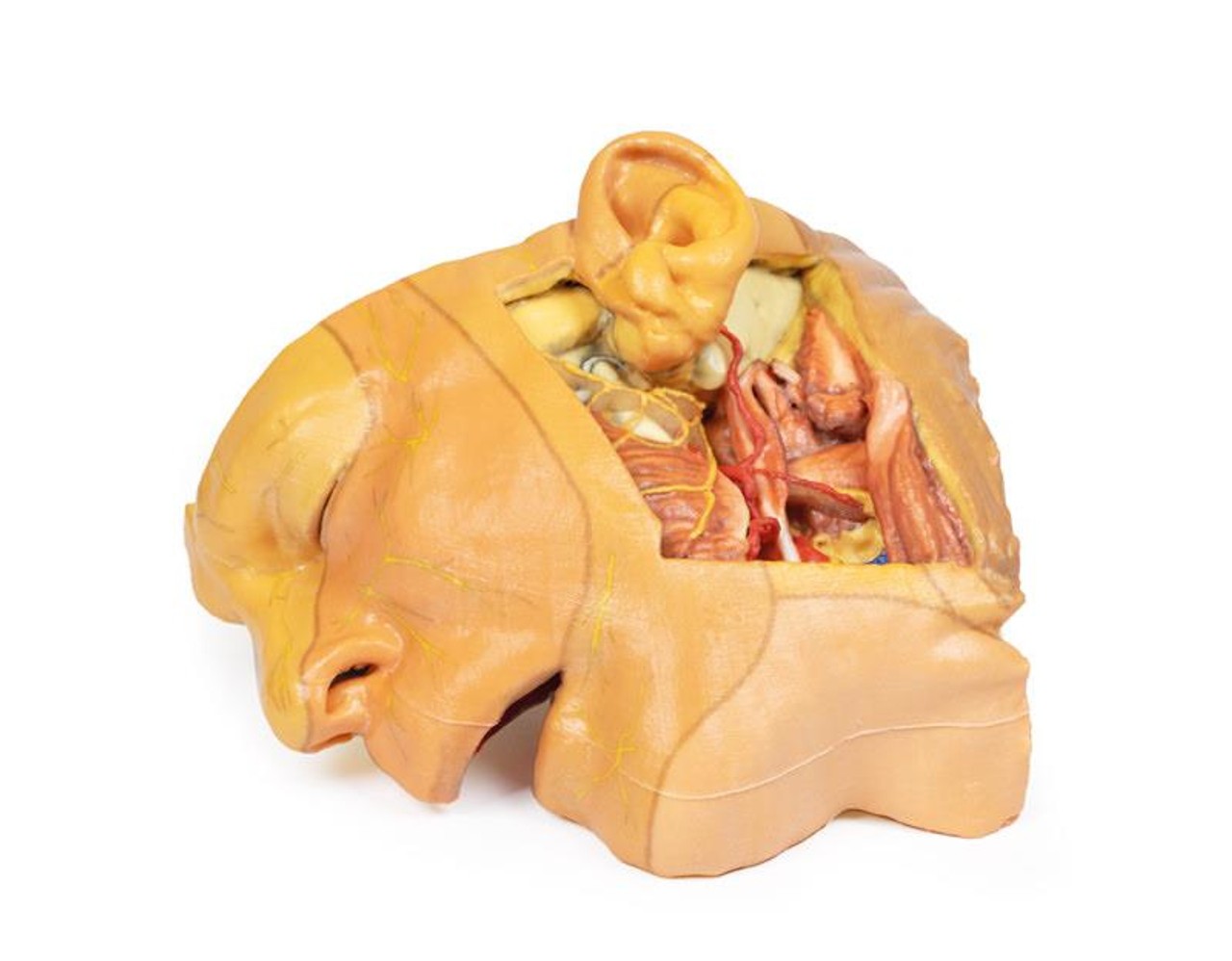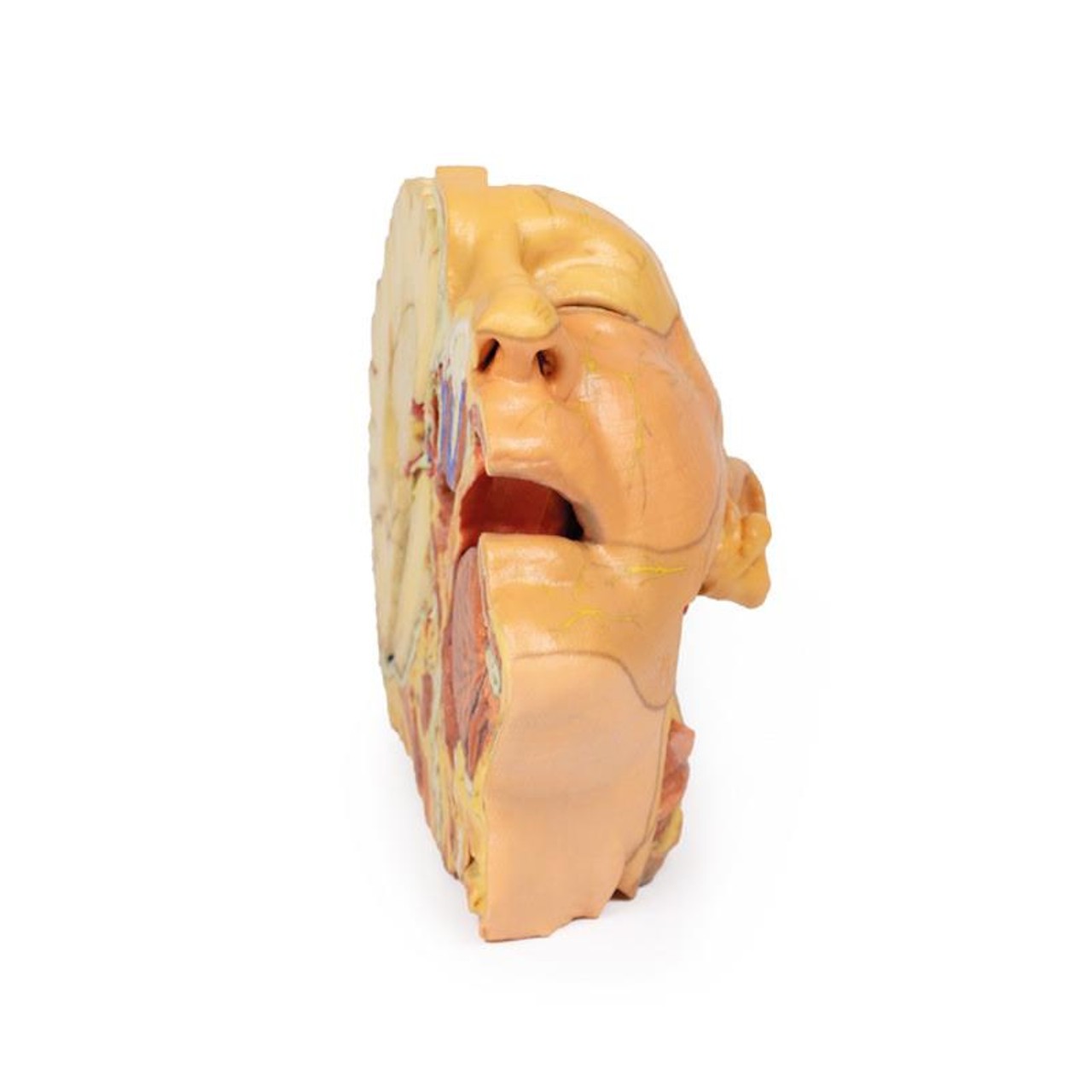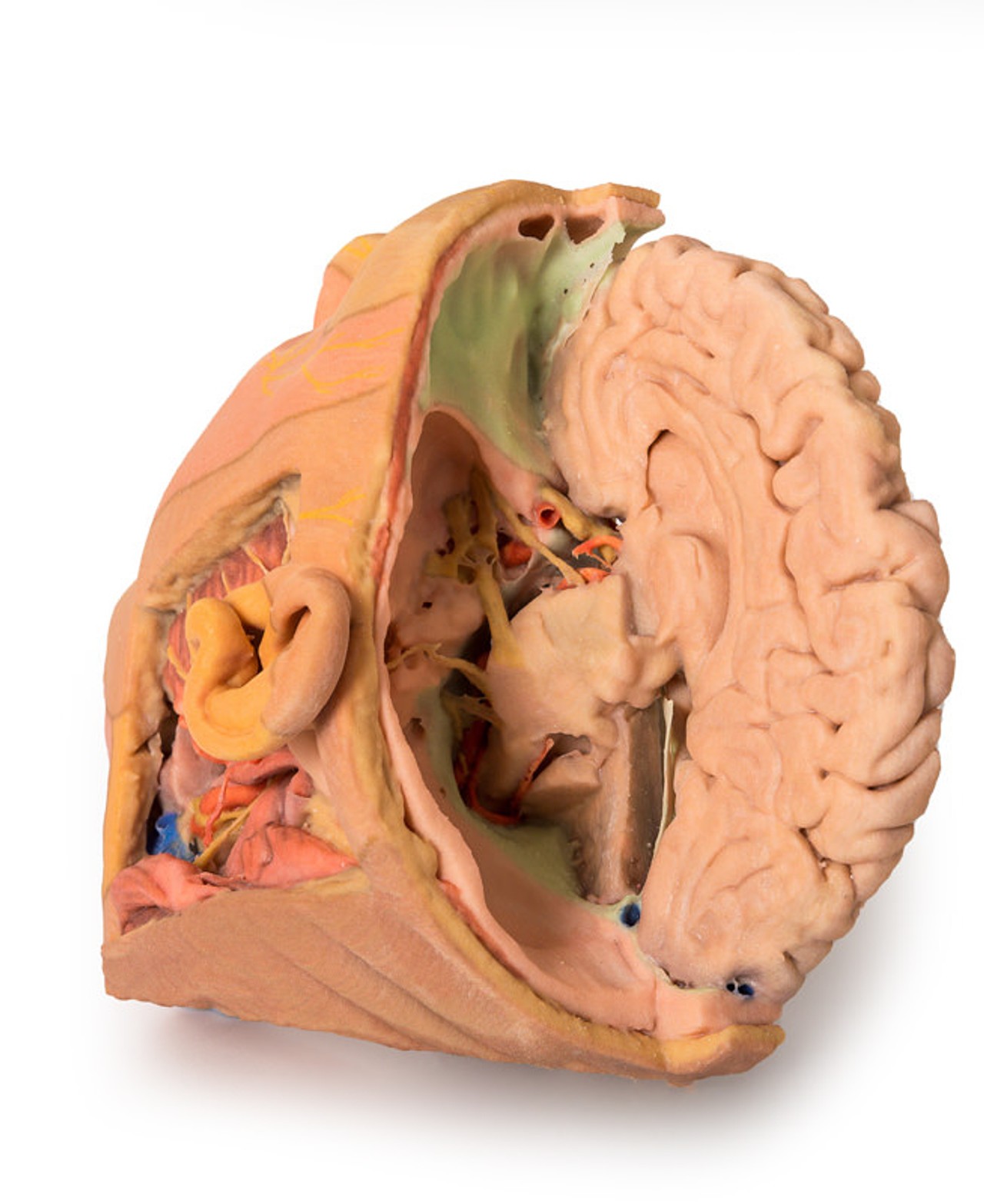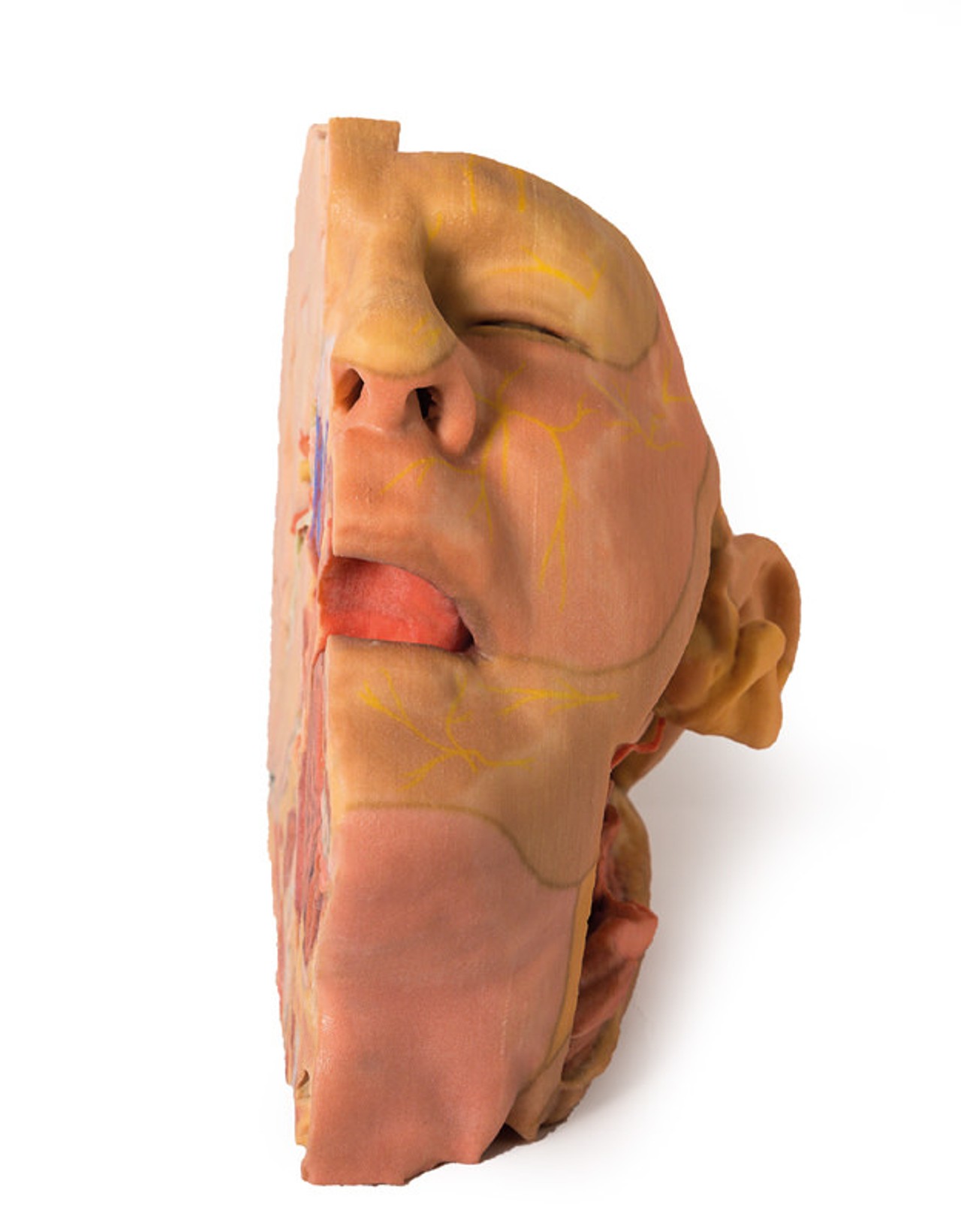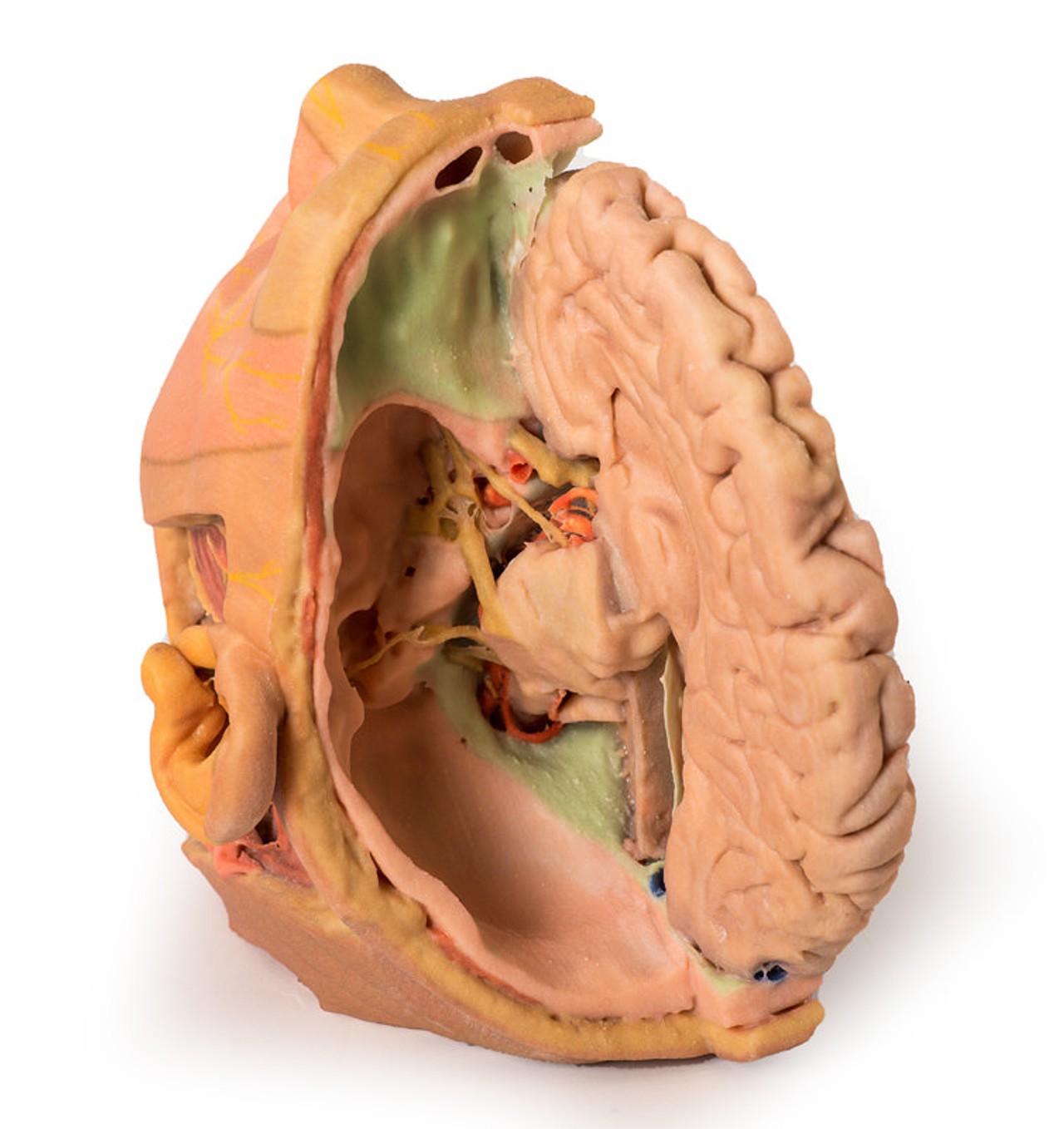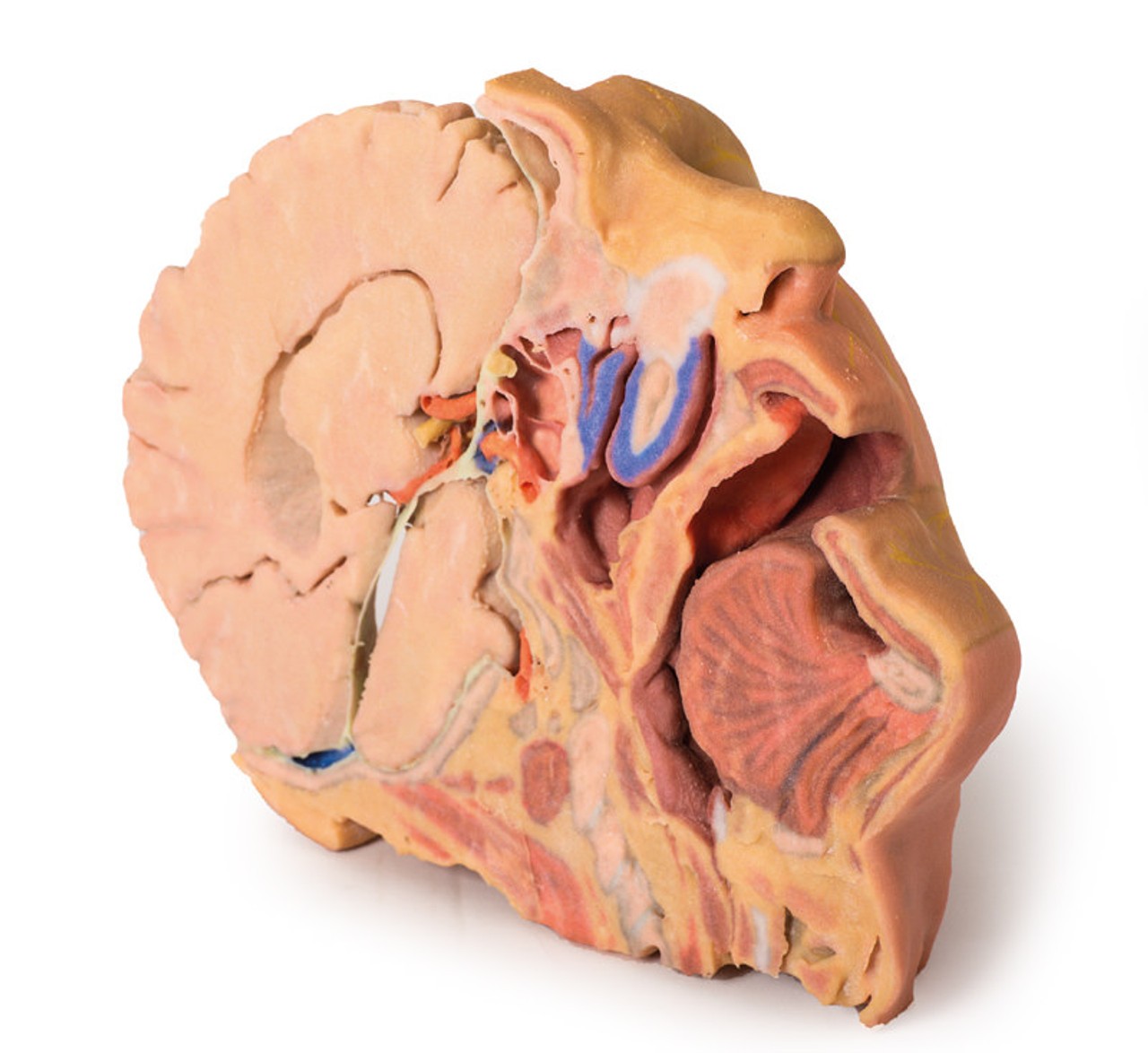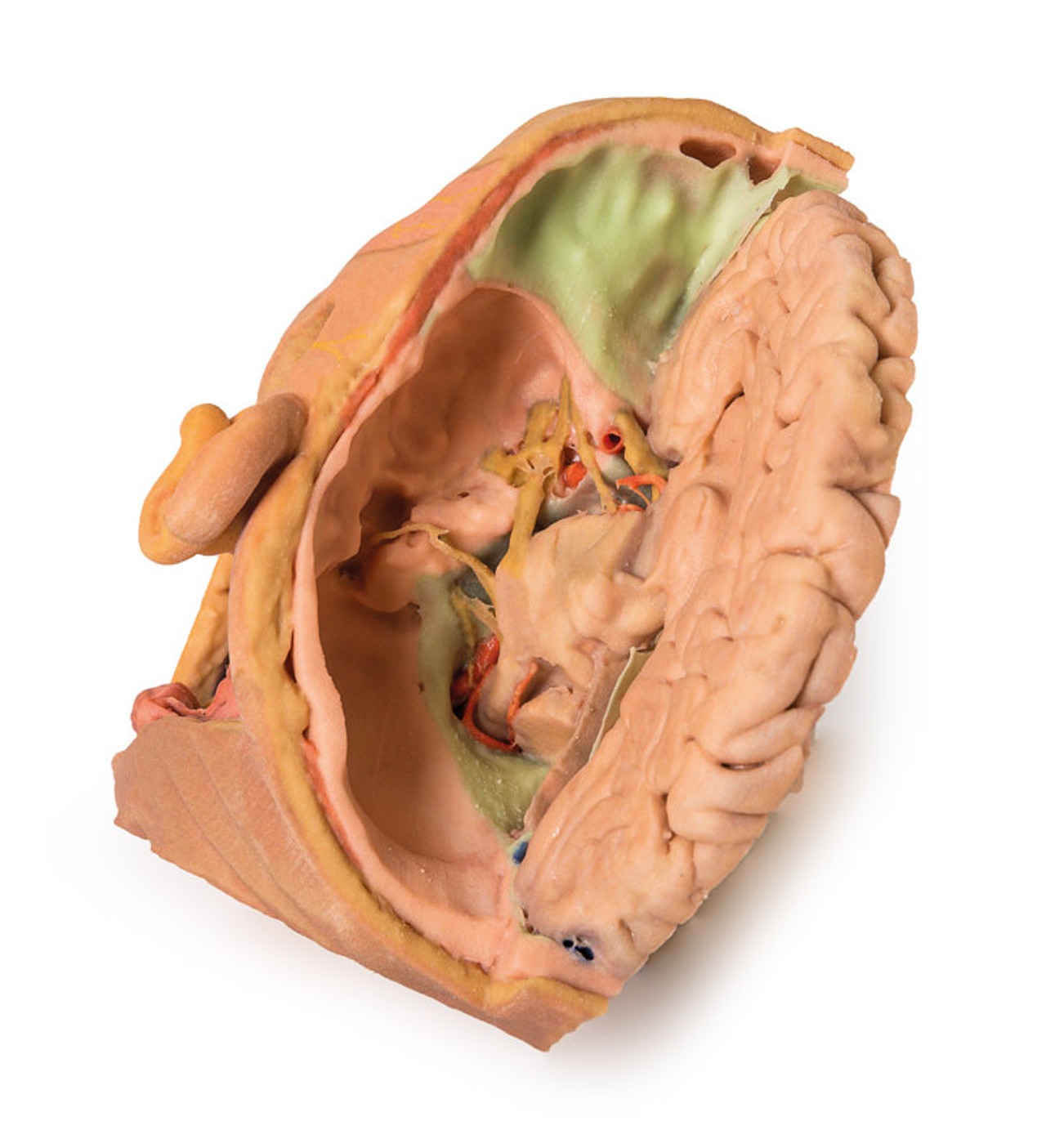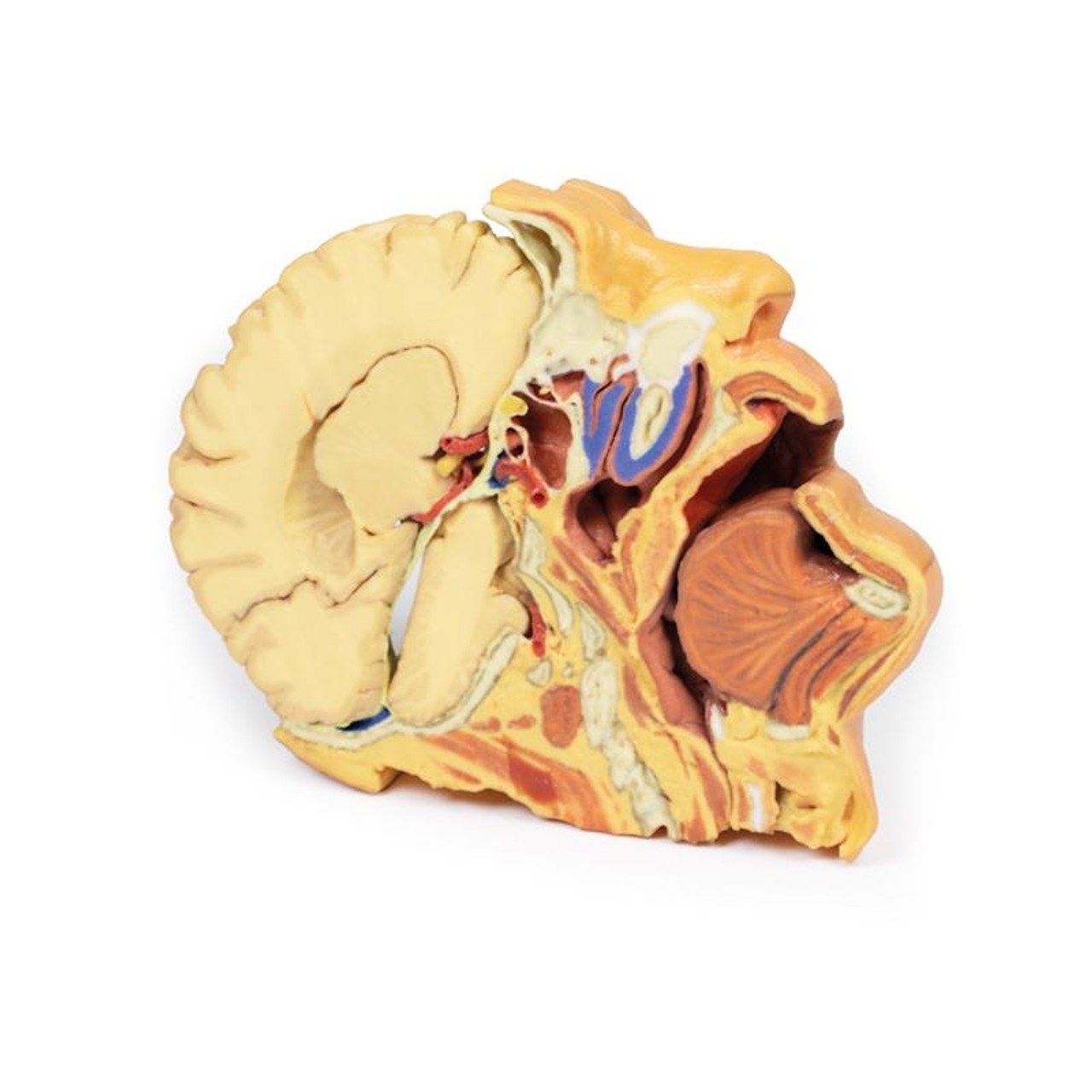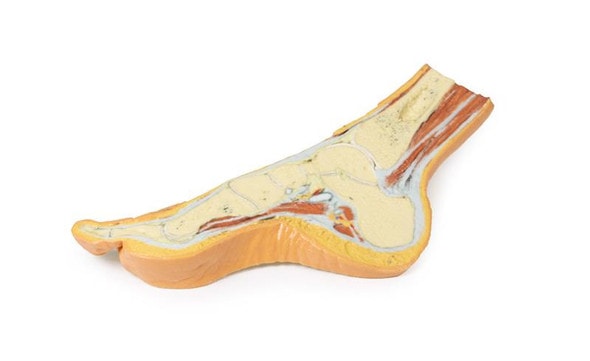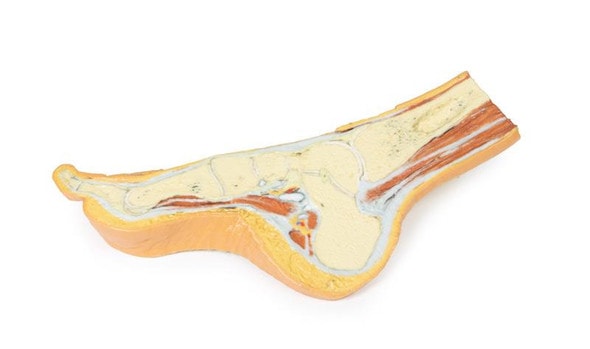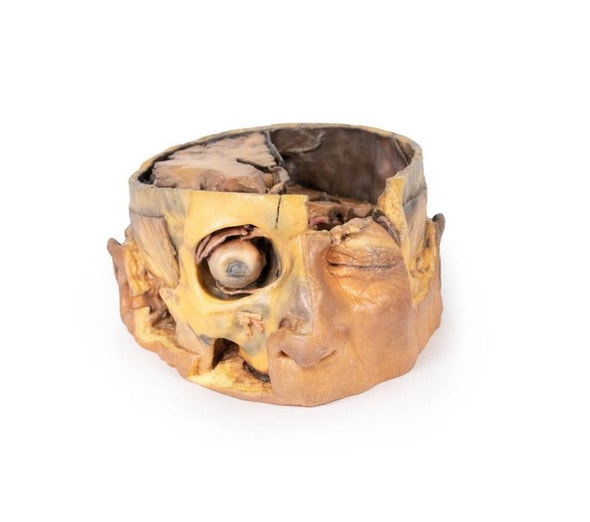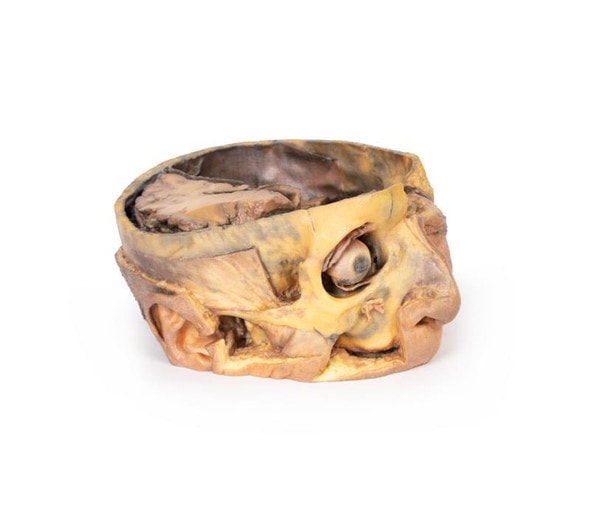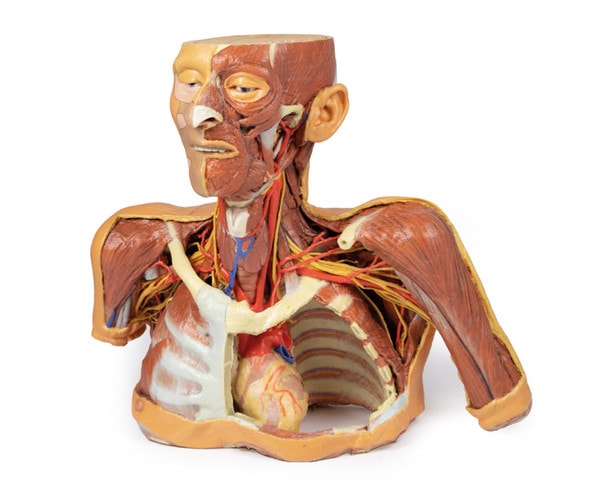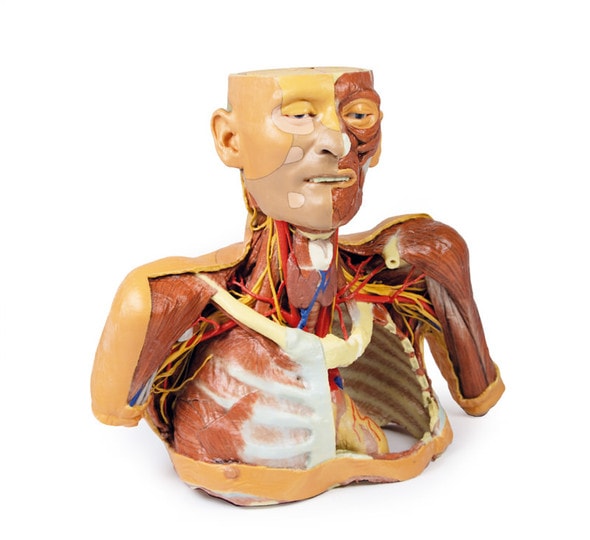Description
At the forefront of medicine and technology, we are proud to offer these incredible, uncompromised replicas of human anatomy. Using the latest 3D printing technology and materials available, this model is an exact replica of a human cadaver, brought to "life" by extensive medical scanning and manufacturing technologies. Over are the days of using ethically questionable cadavers, the mess of hazardous preservation chemicals, and the inaccuracies of plastinated models that often over-enhance anatomy for display, not realism. See the future, and the beauty, of real human anatomy with these incredible anatomical replicas!
This 3D printed specimen of a parasagittally sectioned head and neck demonstrates a range of anatomical features:
Lateral aspect of the face: A window has been created to expose the parotid region. The pinna of the ear has been left intact, however the mastoid process has been exposed by reflection of the sternocleidomastoid (SCM) muscle. The parotid gland has been carefully removed to display structures which are normally embedded or hidden by the gland. The attachment of the posterior belly of digastric arising from the digastric groove medial to the mastoid process can be clearly seen. The masseter muscle is identifiable as it inserts into the lateral surface of the ramus and angle of the mandible. The condyle of the mandible can be seen in an opened temporomandibular joint (TMJ). The articular disc of the TMJ is indicated by a blue/grey colouration. The external carotid artery (ECA) can be seen passing deep to the digastic muscle and tendon. The branches of the ECA including facial artery, the maxillary artery, occipital artery and posterior auricular artery are preserved. At the inferior aspect of the dissected window one can see the cut remains of the internal jugular vein (IJV) and the cut upper surface of the submandibular gland and the hypoglossal nerve winding around the ECA on its lateral surface. The vagus nerve is just visible between the ECA/common carotid and the IJV. Emerging posterior to digastric one can see the spinal part of the accessory nerve superficial to the levator scapulae muscle (stretched due to the manner in which the SCM has been reflected).
The facial nerve can be seen emerging from the stylomastoid foramen immediately posterior to the styloid process and dividing into temporal, zygomatic, buccal and marginal mandibular branches on the face.
The branches of the trigeminal that supply the dermatomes of the face are illustrated diagramatically by painted nerves on the skin of the face.
Brain and cranial cavity: The medial surface of the cerebrum with the corpus collosum and thalamus are demonstrated. The septum pelucidum has been removed. The left hemisphere of the cerebellum and cerebral hemispheres have been removed to expose the floor of the left anterior, middle and posterior cranial fossa and the fourth ventricle. The anatomy around the cavernous sinus and sella turcica is well displayed. The intracranial course of cranial nerves II, III, V, VII, VIII, IX, X and spinal part of XI are also highlighted from their origin from the brainstem. The facial canal has been opened by removal of part of the temporal bone to expose the facial nerve, the geniculate ganglion and its course in the middle ear (due to removal of the tegmen tympani).
Medial surface: The parasagittal cut surface shows the lateral ventricle, the right cerebral peduncle, posterior cerebral artery, and the cut edge of the tentorium cerebelli. In the region of the sphenoid the internal carotid artery and the carotid siphon are visible in the cavernous sinus as it pierces the dural roof (pale green) to commence its intracranial course. Here it lies lateral to the right optic chiasm. The mouth, tongue, associated muscles, lateral aspect of the nasal cavity, nasopharynx, and cut muscles and vertebrae are also visible on the medial surface of this parasagittal section.
Please Note: Thanks to the flexibility of manufacturing that 3D Printing offers, this model is "printed to order", and is not typically available for immediate shipment. Most models are printed within 15 working days and arrive within 3-5 weeks of ordering, and once an order is submitted to us, it cannot be canceled or altered. Please contact us if you have specific a specific delivery date requirement, and we will do our best to deliver the model by your target date.
Advantages of 3D Printed Anatomical Models
- 3D printed anatomical models are the most anatomically accurate examples of human anatomy because they are based on real human specimens.
- Avoid the ethical complications and complex handling, storage, and documentation requirements with 3D printed models when compared to human cadaveric specimens.
- 3D printed anatomy models are far less expensive than real human cadaveric specimens.
- Reproducibility and consistency allow for standardization of education and faster availability of models when you need them.
- Customization options are available for specific applications or educational needs. Enlargement, highlighting of specific anatomical structures, cutaway views, and more are just some of the customizations available.
Disadvantages of Human Cadavers
- Access to cadavers can be problematic and ethical complications are hard to avoid. Many countries cannot access cadavers for cultural and religious reasons.
- Human cadavers are costly to procure and require expensive storage facilities and dedicated staff to maintain them. Maintenance of the facility alone is costly.
- The cost to develop a cadaver lab or plastination technique is extremely high. Those funds could purchase hundreds of easy to handle, realistic 3D printed anatomical replicas.
- Wet specimens cannot be used in uncertified labs. Certification is expensive and time-consuming.
- Exposure to preservation fluids and chemicals is known to cause long-term health problems for lab workers and students. 3D printed anatomical replicas are safe to handle without any special equipment.
- Lack of reuse and reproducibility. If a dissection mistake is made, a new specimen has to be used and students have to start all over again.
Disadvantages of Plastinated Specimens
- Like real human cadaveric specimens, plastinated models are extremely expensive.
- Plastinated specimens still require real human samples and pose the same ethical issues as real human cadavers.
- The plastination process is extensive and takes months or longer to complete. 3D printed human anatomical models are available in a fraction of the time.
- Plastinated models, like human cadavers, are one of a kind and can only showcase one presentation of human anatomy.
Advanced 3D Printing Techniques for Superior Results
- Vibrant color offering with 10 million colors
- UV-curable inkjet printing
- High quality 3D printing that can create products that are delicate, extremely precise, and incredibly realistic
- To improve durability of fragile, thin, and delicate arteries, veins or vessels, a clear support material is printed in key areas. This makes the models robust so they can be handled by students easily.

